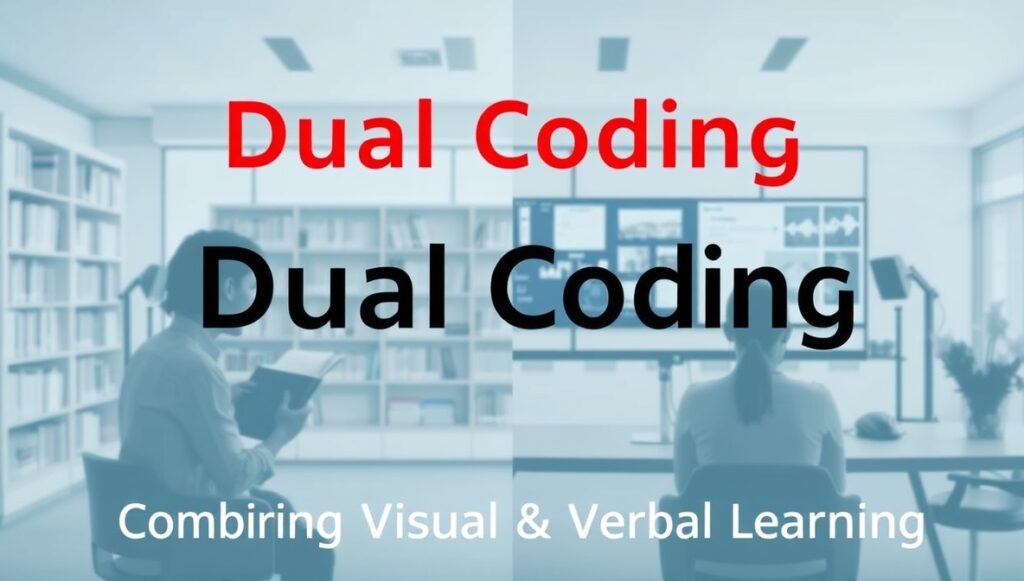In an era where information overload is the norm and academic competition has never been fiercer, effective study techniques have become more crucial than ever. Yet despite having access to more educational resources than any generation before us, many students still struggle with retention, comprehension, and academic performance. The problem isn’t a lack of effort—it’s often a reliance on ineffective study methods that feel productive but deliver poor results.

After decades of educational research and cognitive psychology studies, we now understand which study techniques genuinely improve learning outcomes and which are merely time-consuming illusions of productivity. This comprehensive guide explores the top 10 evidence-based study techniques that consistently deliver results, backed by scientific research and proven effective across different subjects and learning styles.
1. Active Recall: The Memory Powerhouse
Active recall stands as perhaps the most powerful study technique available, yet it’s often overlooked in favor of more passive methods. Instead of simply re-reading notes or highlighting text, active recall involves actively retrieving information from memory without looking at source materials.
How it works: Close your books and notes, then try to write down or verbally explain everything you remember about a topic. This process forces your brain to strengthen neural pathways and identify knowledge gaps that passive reading often masks.
Implementation strategies:
- Create flashcards with questions on one side and answers on the other
- Use the “blank page method”—write everything you know about a topic on a blank sheet
- Practice explaining concepts to someone else or even to yourself out loud
- Use apps like Anki or Quizlet for digital flashcard systems with spaced repetition
Why it works: Research by cognitive psychologist Henry Roediger demonstrates that the act of retrieving information from memory strengthens the memory trace more than passive review. Students using active recall show 50% better retention compared to those using traditional re-reading methods.
2. Spaced Repetition: Fighting the Forgetting Curve
Hermann Ebbinghaus discovered the forgetting curve in 1885, showing that we forget approximately 50% of new information within an hour and 90% within a week without reinforcement. Spaced repetition combats this natural decline by reviewing material at increasingly longer intervals.
The optimal spacing intervals:
- First review: 1 day after initial learning
- Second review: 3 days later
- Third review: 1 week later
- Fourth review: 2 weeks later
- Fifth review: 1 month later
Implementation:
- Use spaced repetition software that automatically schedules reviews
- Create a manual calendar system for review dates
- Combine with active recall for maximum effectiveness
- Start spaced repetition early in your study timeline, not right before exams
Scientific backing: Studies show that spaced repetition can improve long-term retention by up to 200% compared to massed practice (cramming). The technique works by taking advantage of the “spacing effect,” where information reviewed at intervals is remembered better than information studied in a single session.
3. The Pomodoro Technique: Maximizing Focus and Preventing Burnout
Developed by Francesco Cirillo in the late 1980s, the Pomodoro Technique breaks study sessions into focused 25-minute intervals followed by 5-minute breaks, with longer breaks after every four cycles.
Standard Pomodoro structure:
- 25 minutes of focused study
- 5-minute break
- Repeat 3 more times
- Take a 15-30 minute break after 4 pomodoros
Why it’s effective:
- Prevents mental fatigue that reduces learning efficiency
- Creates artificial deadlines that enhance focus
- Makes large study sessions feel more manageable
- Provides regular opportunities for information consolidation
Optimization tips:
- Adjust intervals based on your attention span (some prefer 45-50 minute sessions)
- Use breaks for physical movement to boost cognitive function
- Track completed pomodoros to visualize progress
- Turn off all notifications during focused intervals
4. Elaborative Interrogation: The Power of Why
Elaborative interrogation involves asking yourself “why” questions about the material you’re studying. This technique forces you to think deeply about concepts and connect new information to existing knowledge.

How to implement:
- After reading a concept, ask: “Why is this true?”
- “Why does this work this way and not another way?”
- “Why is this important or relevant?”
- “Why might someone disagree with this?”
Example in practice: Instead of memorizing “Mitochondria are the powerhouse of the cell,” ask “Why are mitochondria considered the powerhouse? What specific processes make them so crucial for cellular energy? Why can’t other organelles perform this function?”
Research support: Studies show that students using elaborative interrogation show 30-40% better performance on comprehension tests compared to those using simple repetition or summarization.
5. Mind Mapping: Visual Learning Architecture
Mind mapping transforms linear notes into visual representations that mirror how the brain naturally processes and stores information. This technique is particularly effective for visual learners and for understanding complex relationships between concepts.
Creating effective mind maps:
- Start with a central concept in the middle of the page
- Branch out to major themes and subtopics
- Use colors, symbols, and images to enhance memory
- Keep text brief—focus on keywords and phrases
- Show connections between different branches
Digital vs. analog: While apps like MindMeister or XMind offer convenience and sharing capabilities, research suggests that hand-drawn mind maps may provide better retention due to the kinesthetic element of drawing.
Best applications:
- Literature analysis and essay planning
- Historical events and their interconnections
- Scientific processes and systems
- Language learning vocabulary organization
6. Interleaving: Mixing It Up for Better Learning
Interleaving involves mixing different topics or types of problems within a single study session, rather than focusing on one topic at a time (known as blocking). This technique initially feels more difficult but leads to better long-term retention and improved ability to distinguish between concepts.
How to interleave effectively:
- Alternate between different but related topics every 15-20 minutes
- Mix problem types in mathematics and sciences
- Combine different skills within the same subject area
- Vary your study methods within sessions
Example: Instead of spending 2 hours on calculus derivatives, spend 30 minutes on derivatives, 30 minutes on integrals, 30 minutes on limits, then 30 minutes back to derivatives.
The research: Studies in mathematical learning show that students using interleaved practice perform 76% better on tests compared to those using blocked practice, despite feeling less confident during the learning process.
7. Dual Coding: Combining Visual and Verbal Learning
Allan Paivio’s dual coding theory suggests that information processed through both visual and verbal channels is remembered more effectively than information processed through only one channel.

Implementation strategies:
- Convert text information into diagrams, charts, or infographics
- Create visual mnemonics for verbal information
- Use the method of loci (memory palace) for sequential information
- Combine reading with educational videos or podcasts
- Draw pictures or diagrams while taking notes
Practical applications:
- Historical timelines with visual representations
- Scientific processes shown as flowcharts with verbal explanations
- Mathematical concepts illustrated with real-world visual examples
- Language learning combining written text with images
8. Teaching Others: The Ultimate Comprehension Test
Often called the Feynman Technique after physicist Richard Feynman, teaching others forces you to organize information clearly, identify gaps in understanding, and simplify complex concepts.
The four-step Feynman process:
- Choose a concept and write it at the top of a blank page
- Explain it in simple terms as if teaching a child
- Identify gaps and return to source material
- Review and simplify your explanation further
Alternative approaches:
- Join or create study groups
- Offer to tutor classmates in subjects you’re studying
- Create educational content (videos, blog posts, presentations)
- Explain concepts to family members or friends
Why it works: Teaching activates multiple learning processes simultaneously: retrieval practice, elaboration, organization, and metacognition. Studies show that students expecting to teach material learn more effectively than those studying for tests alone.
9. Self-Testing: Beyond Practice Exams
Self-testing goes beyond taking practice exams to include any method of checking your knowledge without referring to source materials. This technique provides immediate feedback on your understanding and helps calibrate your confidence with actual knowledge.
Effective self-testing methods:
- Create your own practice questions while studying
- Use past exams and practice problems
- Write summary essays from memory
- Create and solve problems similar to homework assignments
- Use online quiz platforms for your subject area
Metacognitive benefits: Self-testing helps develop metacognition—awareness of your own learning. Students who regularly self-test become better at predicting their performance and identifying areas needing more attention.
Implementation timing: Research suggests that immediate self-testing (right after studying) helps with initial encoding, while delayed self-testing (a few days later) is better for long-term retention.
10. Environment Optimization: Creating Your Learning Laboratory
Your study environment significantly impacts learning efficiency, retention, and focus. Optimizing physical space, timing, and conditions can dramatically improve study outcomes.

Physical environment factors:
- Lighting: Natural light is best; avoid harsh fluorescent lighting
- Temperature: Slightly cool (68-72°F) promotes alertness
- Noise: Complete silence isn’t always best—some background noise can improve focus for certain people
- Seating: Comfortable but not too relaxed; avoid studying in bed
- Organization: Clean, organized space reduces cognitive load
Timing considerations:
- Identify your chronotype (morning lark vs. night owl)
- Schedule demanding subjects during peak alertness hours
- Use less optimal times for review and easier tasks
- Maintain consistent study schedules to build habits
Digital environment:
- Use website blockers during study sessions
- Keep phones in another room or in airplane mode
- Organize digital files and bookmarks for easy access
- Use apps that simulate natural lighting on screens
Implementing These Techniques: A Practical Approach
Start small: Don’t try to implement all techniques simultaneously. Choose 2-3 that resonate with your learning style and current challenges.
Combine techniques: Many of these methods work synergistically. For example, combine active recall with spaced repetition, or use mind mapping with elaborative interrogation.
Track your progress: Keep a study log noting which techniques you use and your performance outcomes. This data will help you identify what works best for your specific situation.
Be patient: Some techniques, like spaced repetition and interleaving, may feel less effective initially but show superior results over time. Trust the research and stick with evidence-based methods.
Adapt to your context: Modify techniques based on your subject matter, available time, and personal preferences while maintaining the core principles that make them effective.
The key to academic success isn’t working harder—it’s working smarter. These ten evidence-based study techniques provide a foundation for more effective learning, better retention, and improved academic performance. By incorporating these methods into your study routine, you’ll not only achieve better grades but also develop deeper understanding and lifelong learning skills that extend far beyond the classroom.



